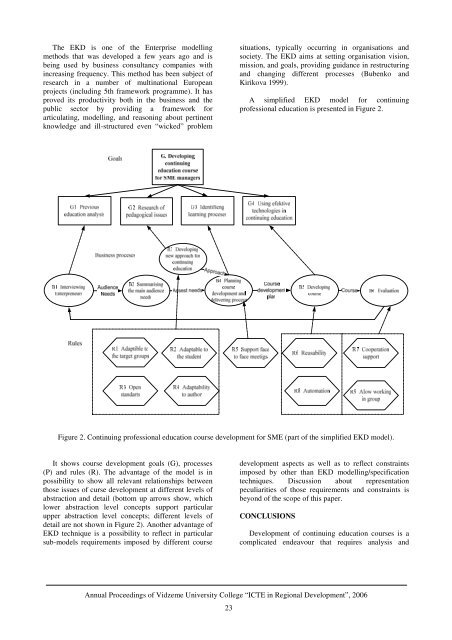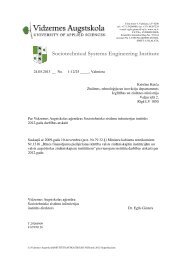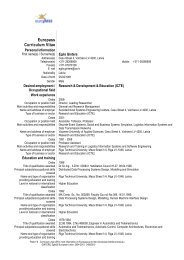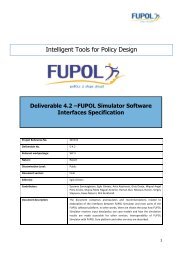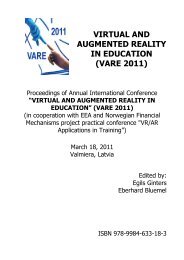Proceedings in pdf format. - Sociotechnical Systems Engineering ...
Proceedings in pdf format. - Sociotechnical Systems Engineering ...
Proceedings in pdf format. - Sociotechnical Systems Engineering ...
Create successful ePaper yourself
Turn your PDF publications into a flip-book with our unique Google optimized e-Paper software.
The EKD is one of the Enterprise modell<strong>in</strong>gmethods that was developed a few years ago and isbe<strong>in</strong>g used by bus<strong>in</strong>ess consultancy companies with<strong>in</strong>creas<strong>in</strong>g frequency. This method has been subject ofresearch <strong>in</strong> a number of mult<strong>in</strong>ational Europeanprojects (<strong>in</strong>clud<strong>in</strong>g 5th framework programme). It hasproved its productivity both <strong>in</strong> the bus<strong>in</strong>ess and thepublic sector by provid<strong>in</strong>g a framework forarticulat<strong>in</strong>g, modell<strong>in</strong>g, and reason<strong>in</strong>g about pert<strong>in</strong>entknowledge and ill-structured even “wicked” problemsituations, typically occurr<strong>in</strong>g <strong>in</strong> organisations andsociety. The EKD aims at sett<strong>in</strong>g organisation vision,mission, and goals, provid<strong>in</strong>g guidance <strong>in</strong> restructur<strong>in</strong>gand chang<strong>in</strong>g different processes (Bubenko andKirikova 1999).A simplified EKD model for cont<strong>in</strong>u<strong>in</strong>gprofessional education is presented <strong>in</strong> Figure 2.Figure 2. Cont<strong>in</strong>u<strong>in</strong>g professional education course development for SME (part of the simplified EKD model).It shows course development goals (G), processes(P) and rules (R). The advantage of the model is <strong>in</strong>possibility to show all relevant relationships betweenthose issues of curse development at different levels ofabstraction and detail (bottom up arrows show, whichlower abstraction level concepts support particularupper abstraction level concepts; different levels ofdetail are not shown <strong>in</strong> Figure 2). Another advantage ofEKD technique is a possibility to reflect <strong>in</strong> particularsub-models requirements imposed by different coursedevelopment aspects as well as to reflect constra<strong>in</strong>tsimposed by other than EKD modell<strong>in</strong>g/specificationtechniques. Discussion about representationpeculiarities of those requirements and constra<strong>in</strong>ts isbeyond of the scope of this paper.CONCLUSIONSDevelopment of cont<strong>in</strong>u<strong>in</strong>g education courses is acomplicated endeavour that requires analysis andAnnual <strong>Proceed<strong>in</strong>gs</strong> of Vidzeme University College “ICTE <strong>in</strong> Regional Development”, 200623


